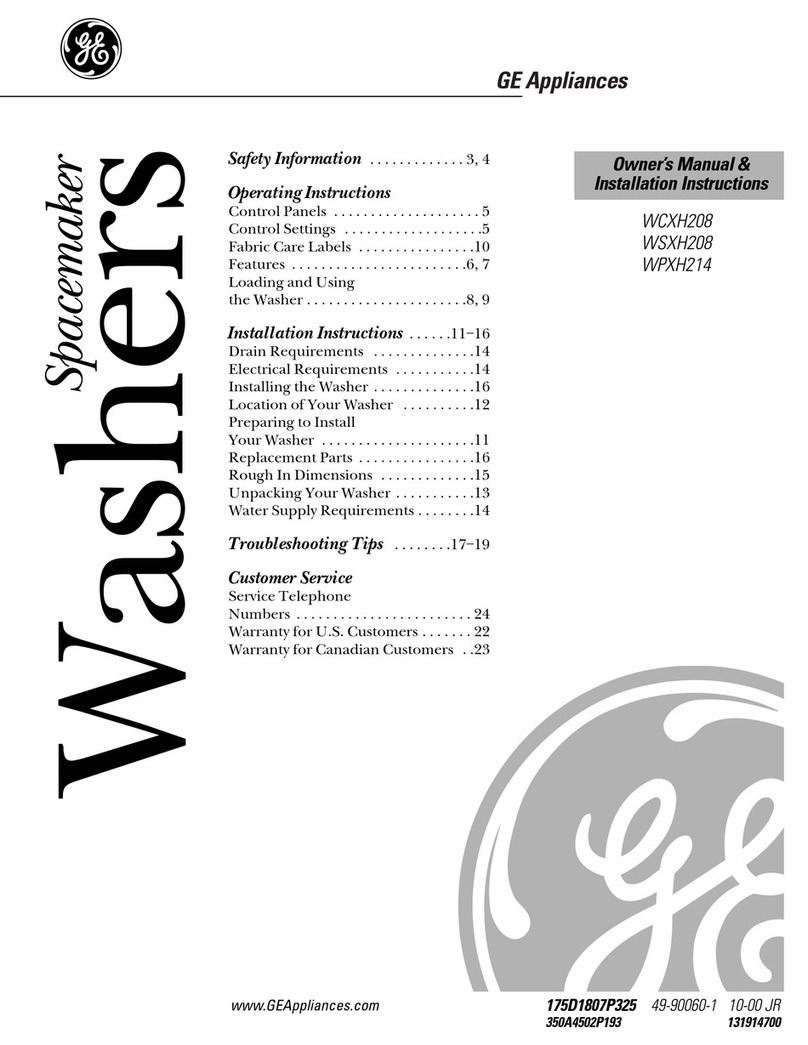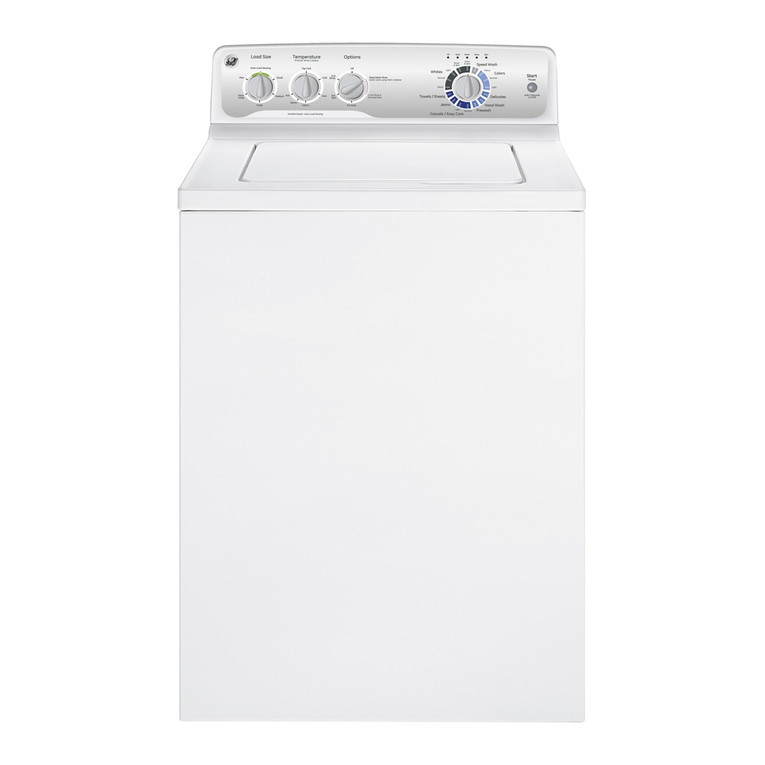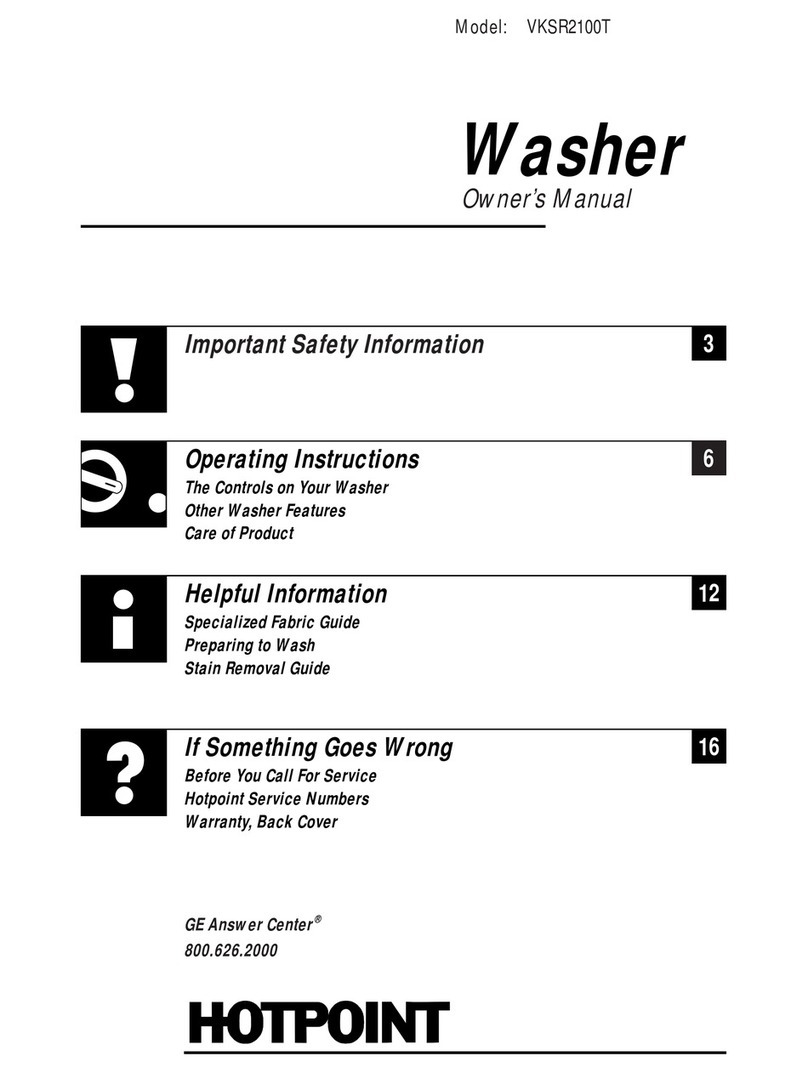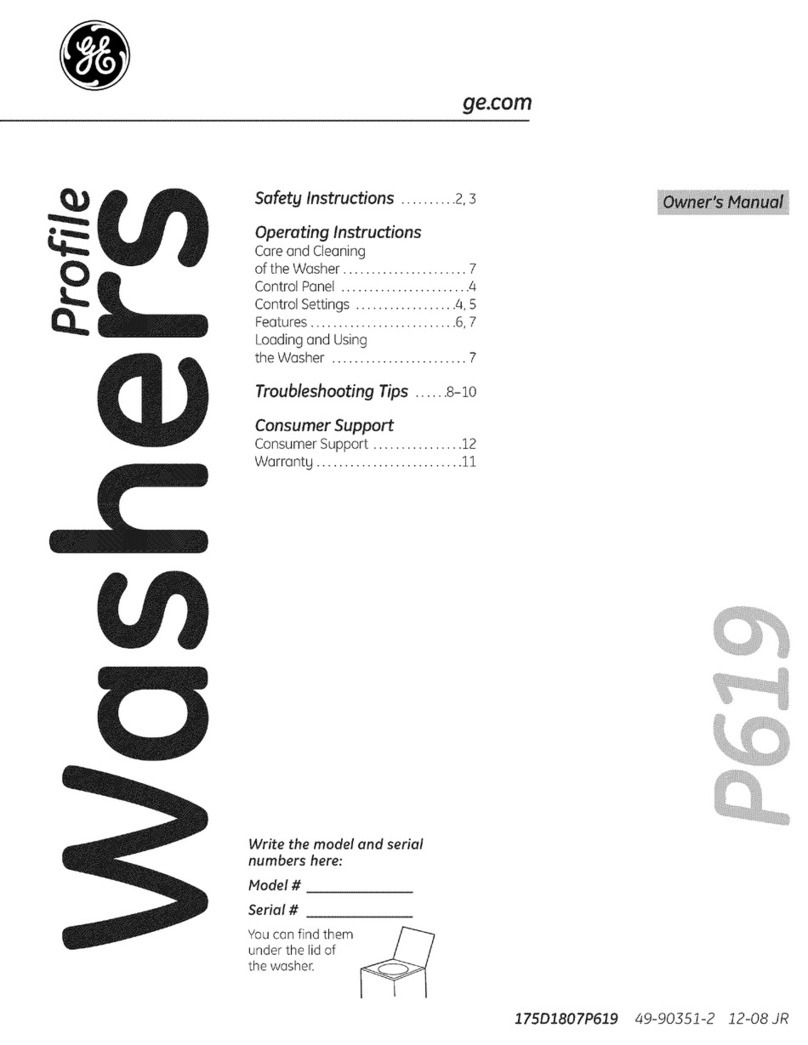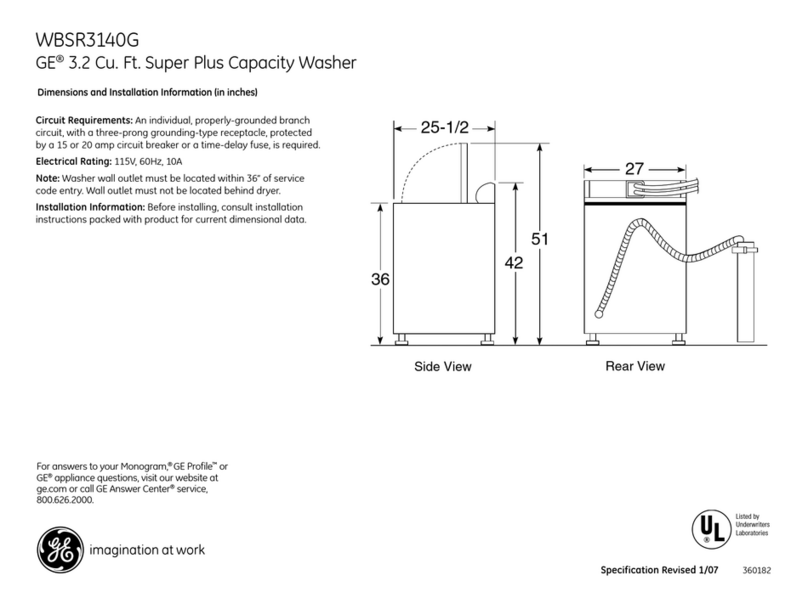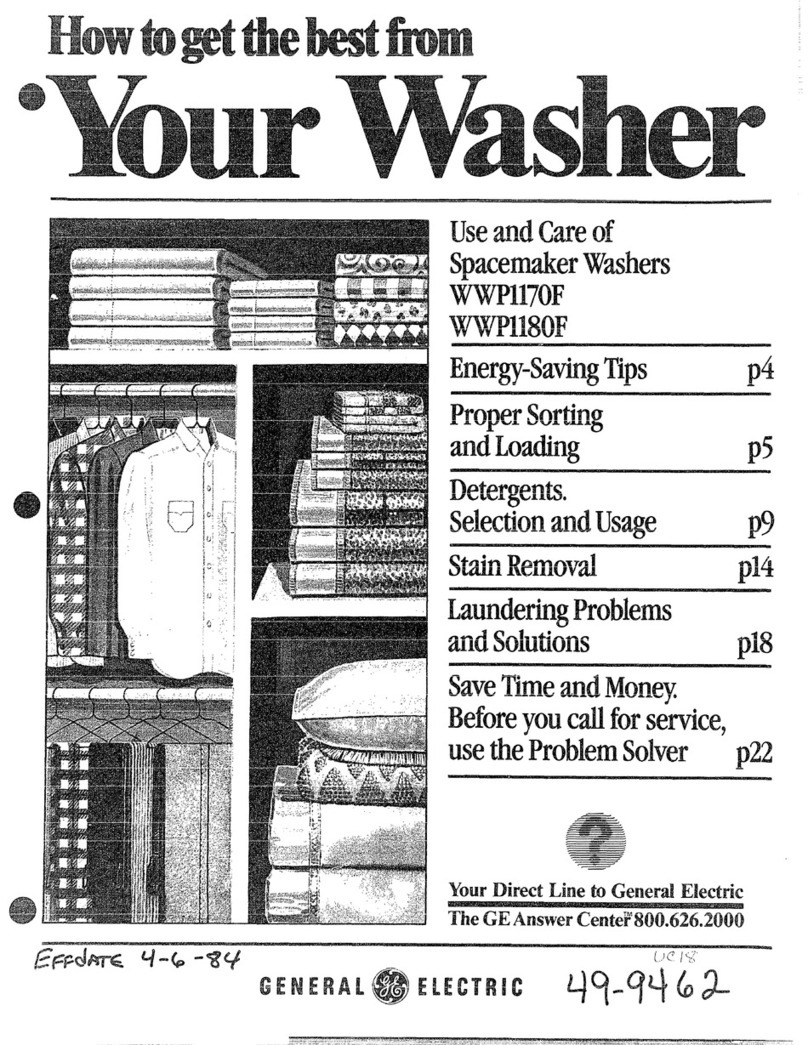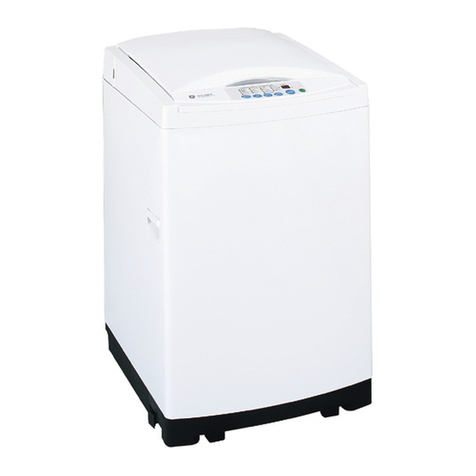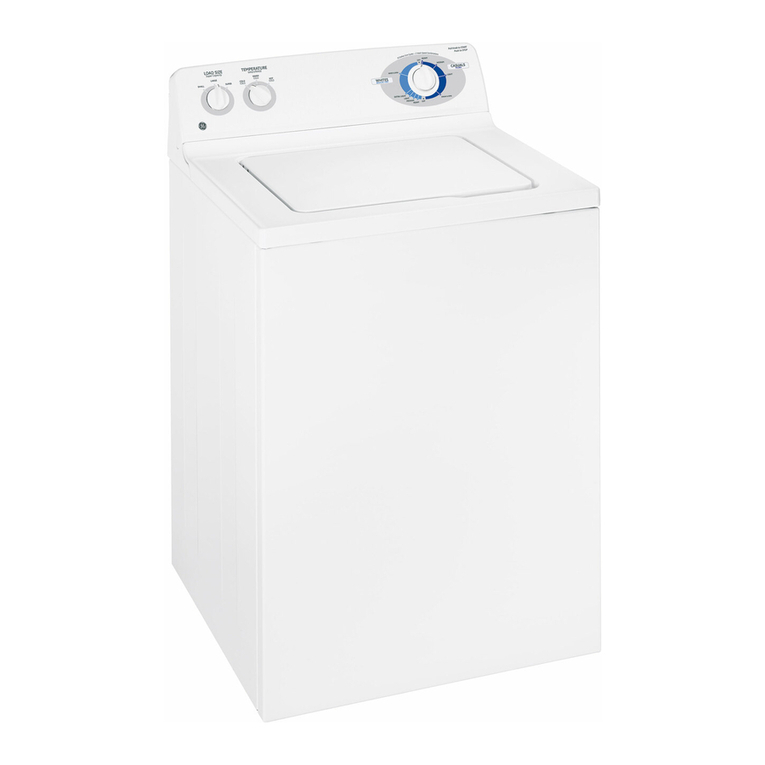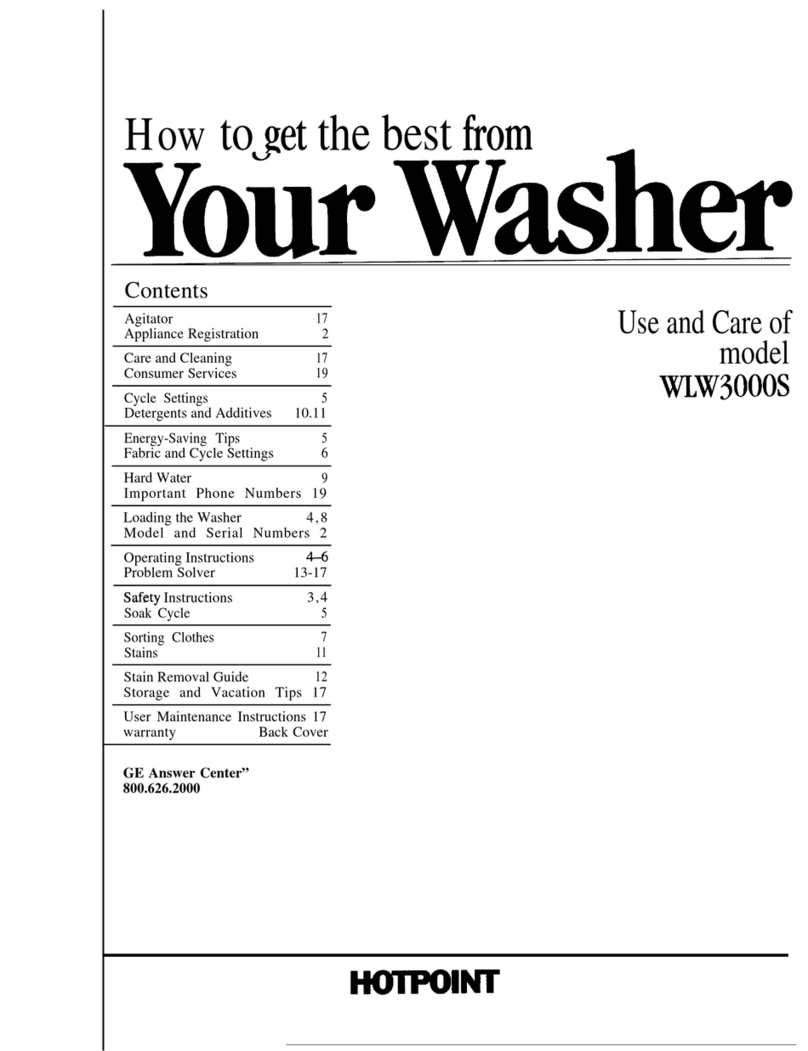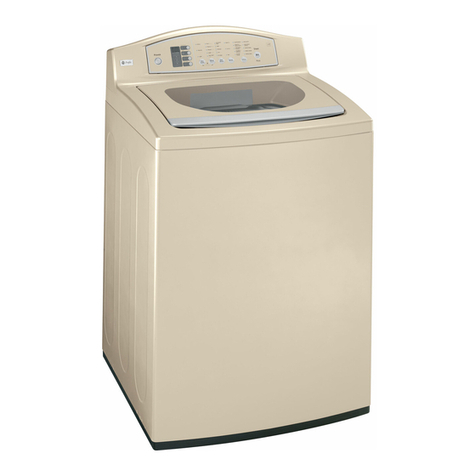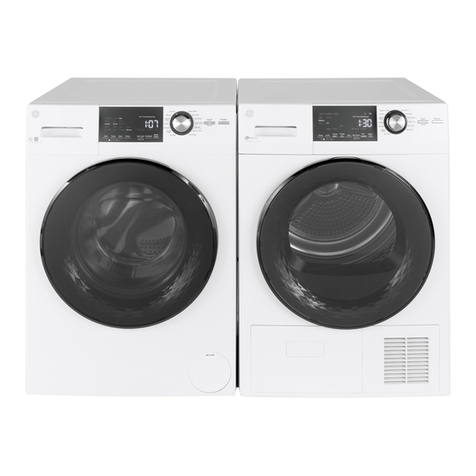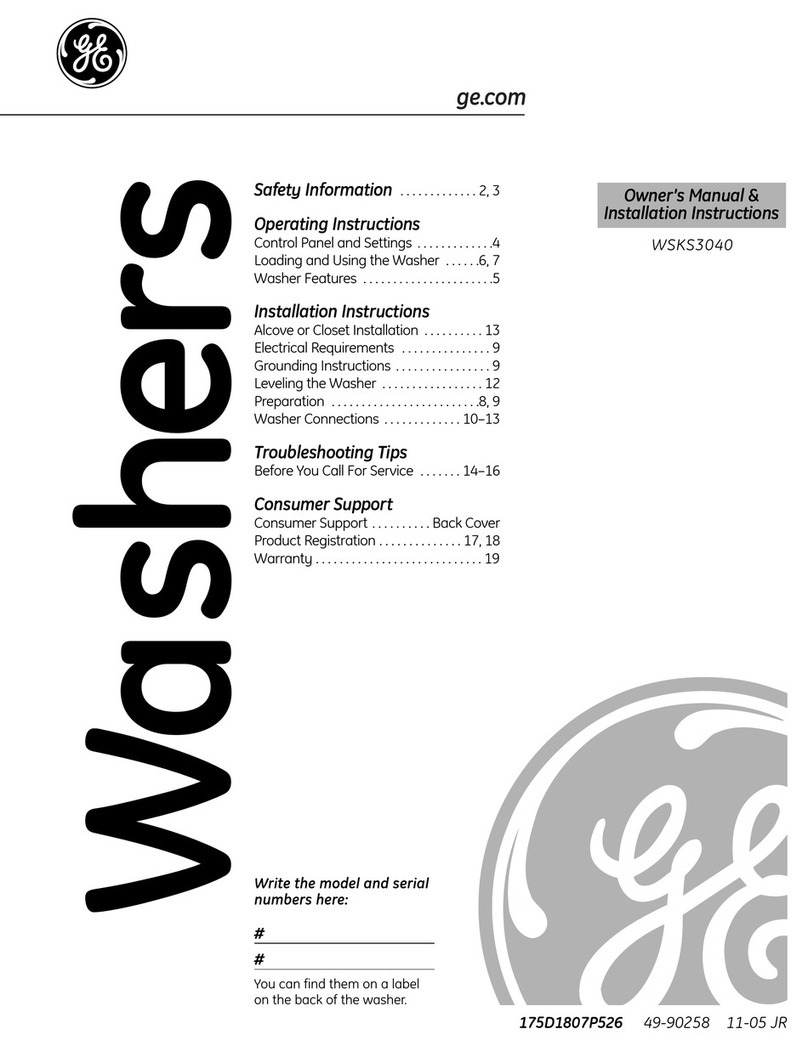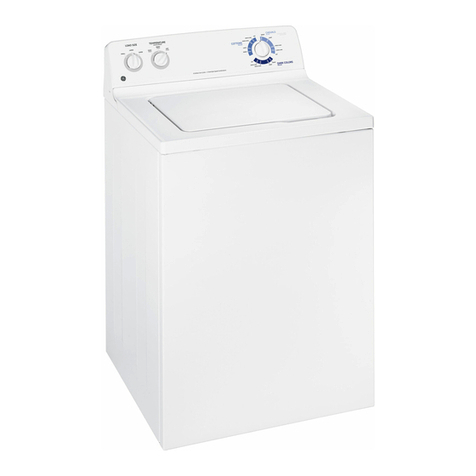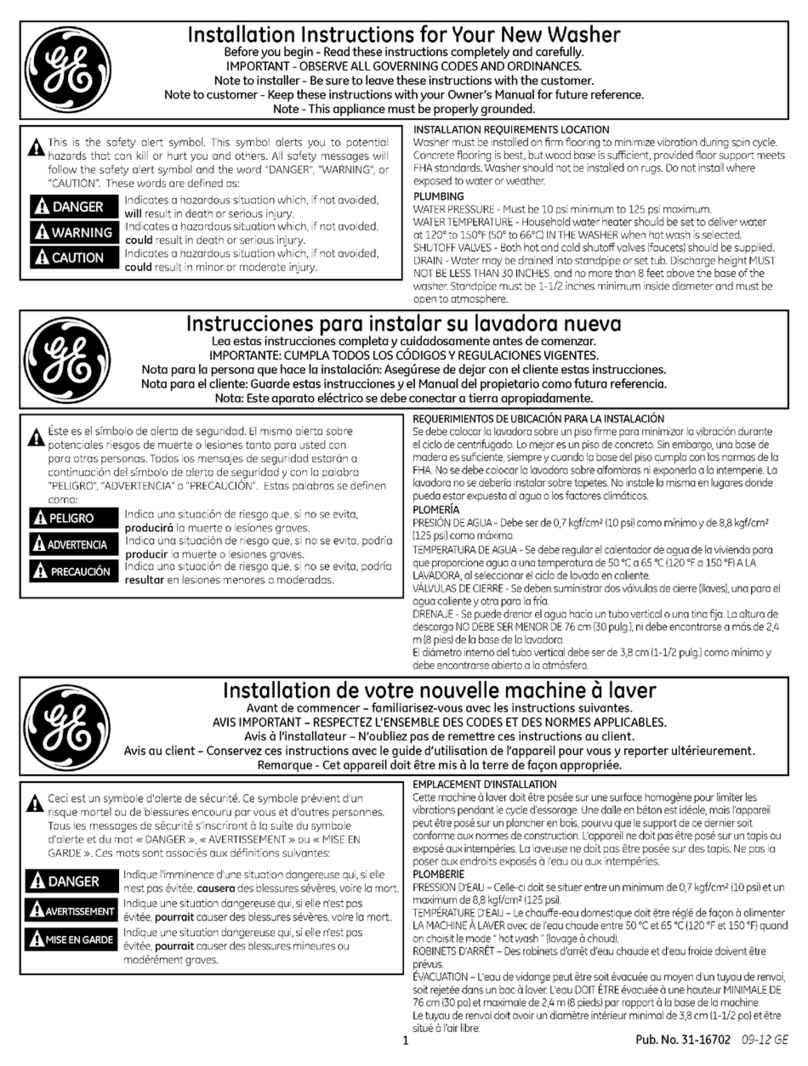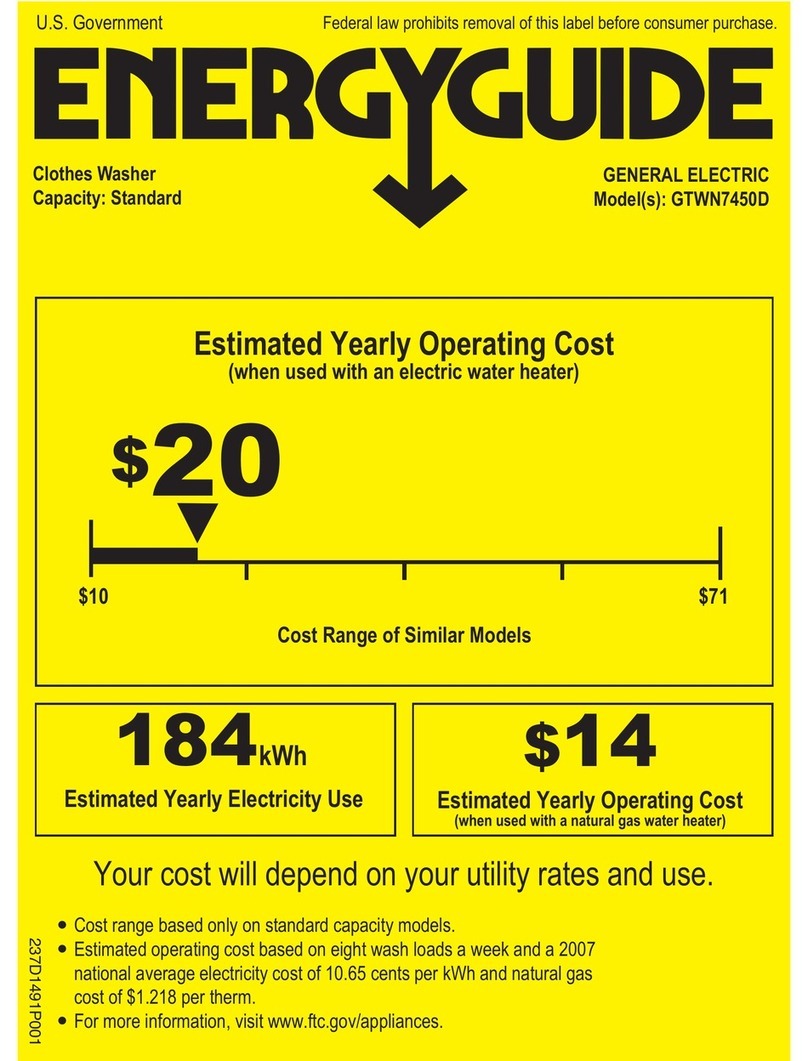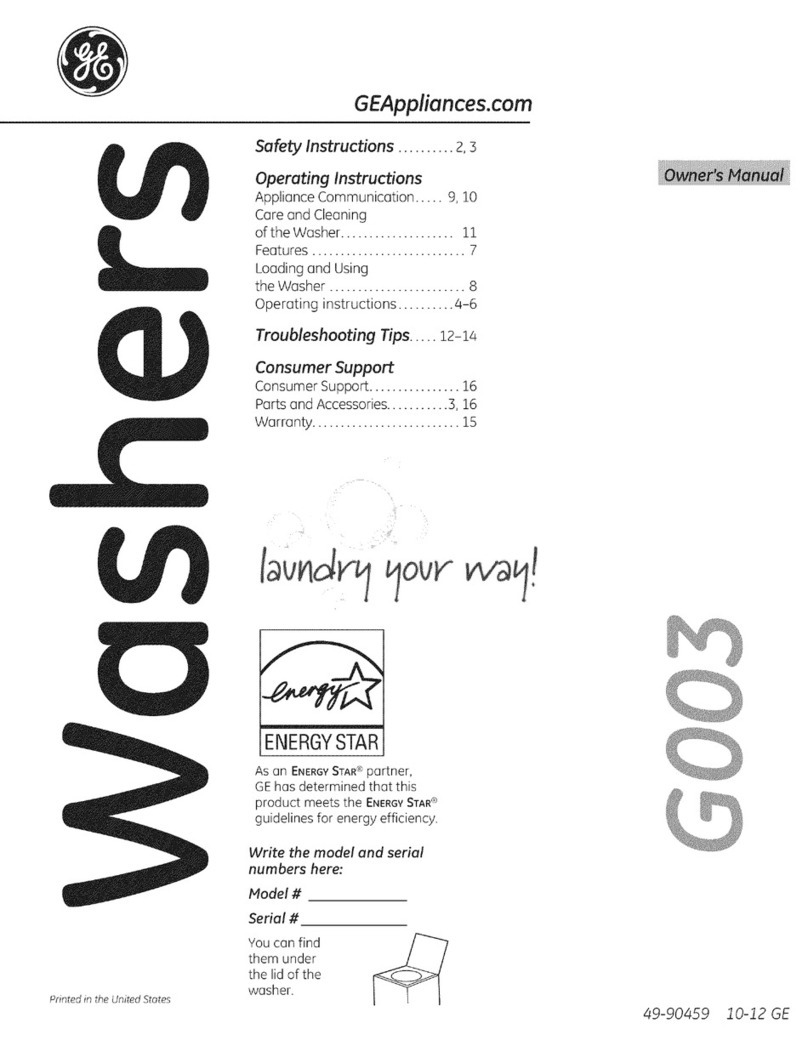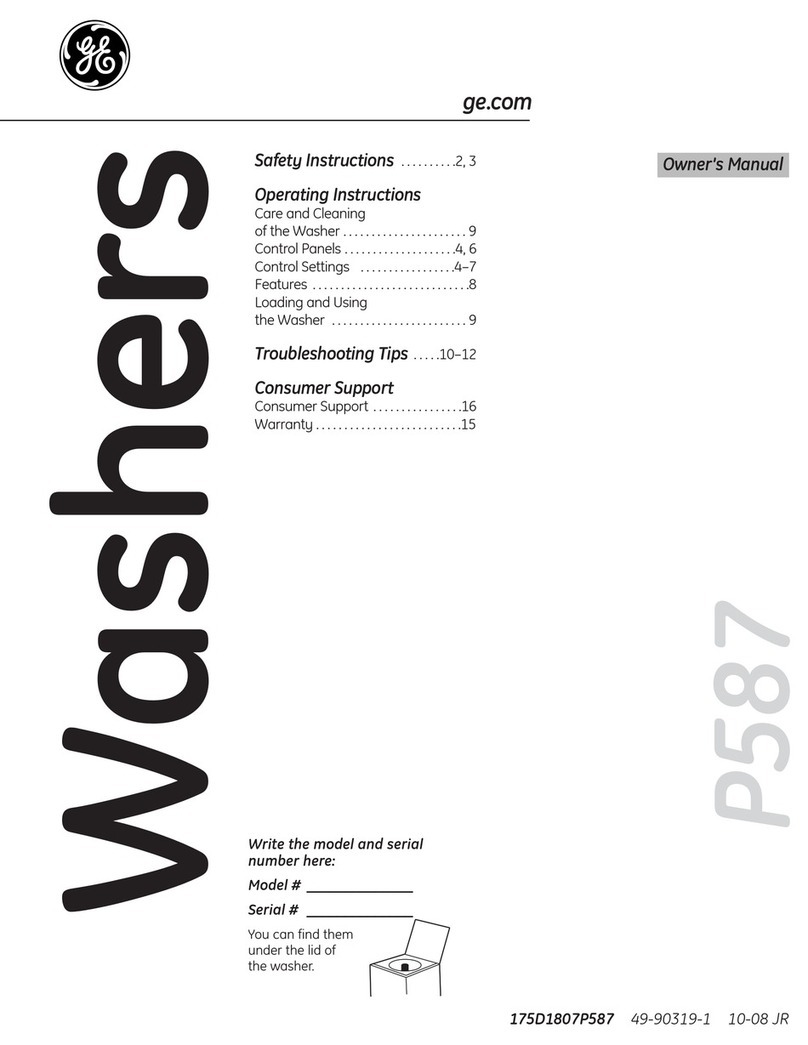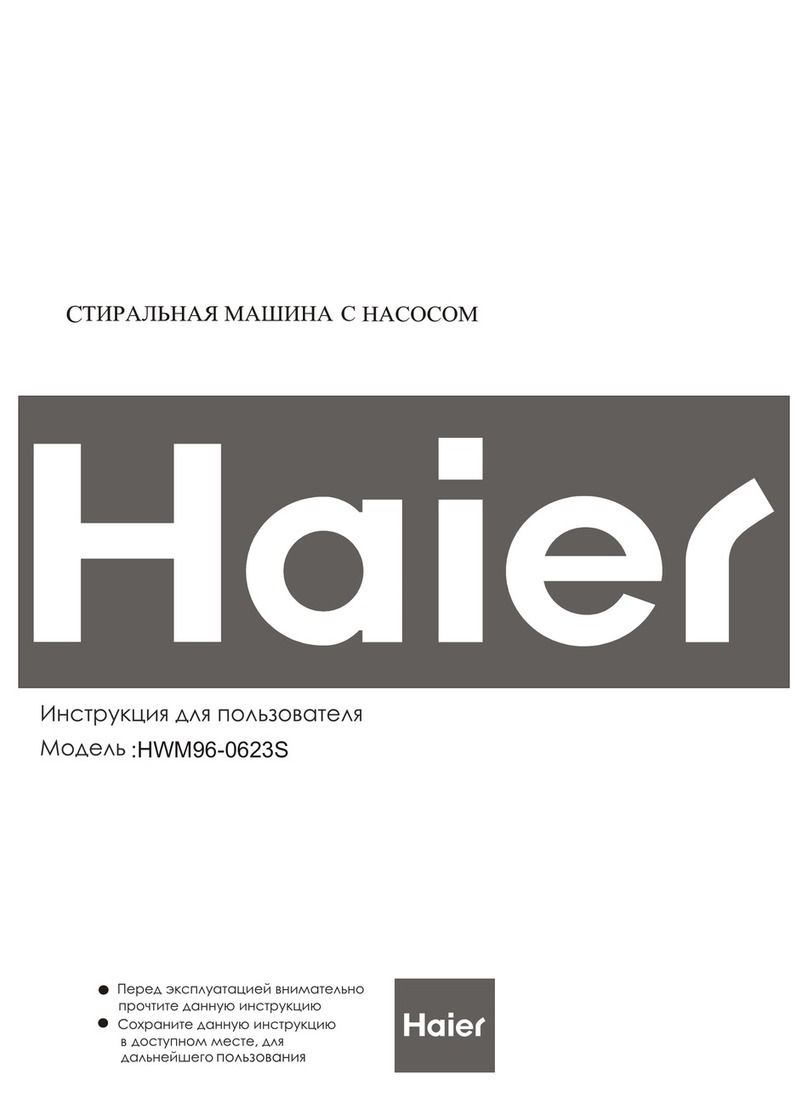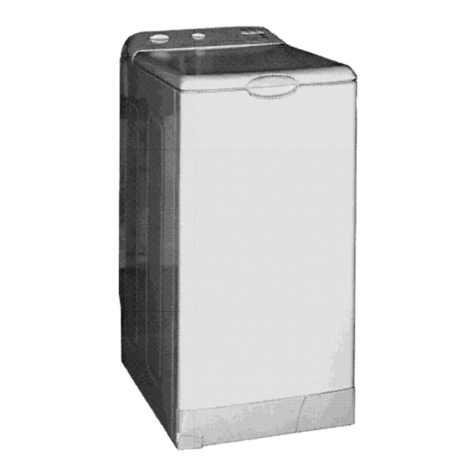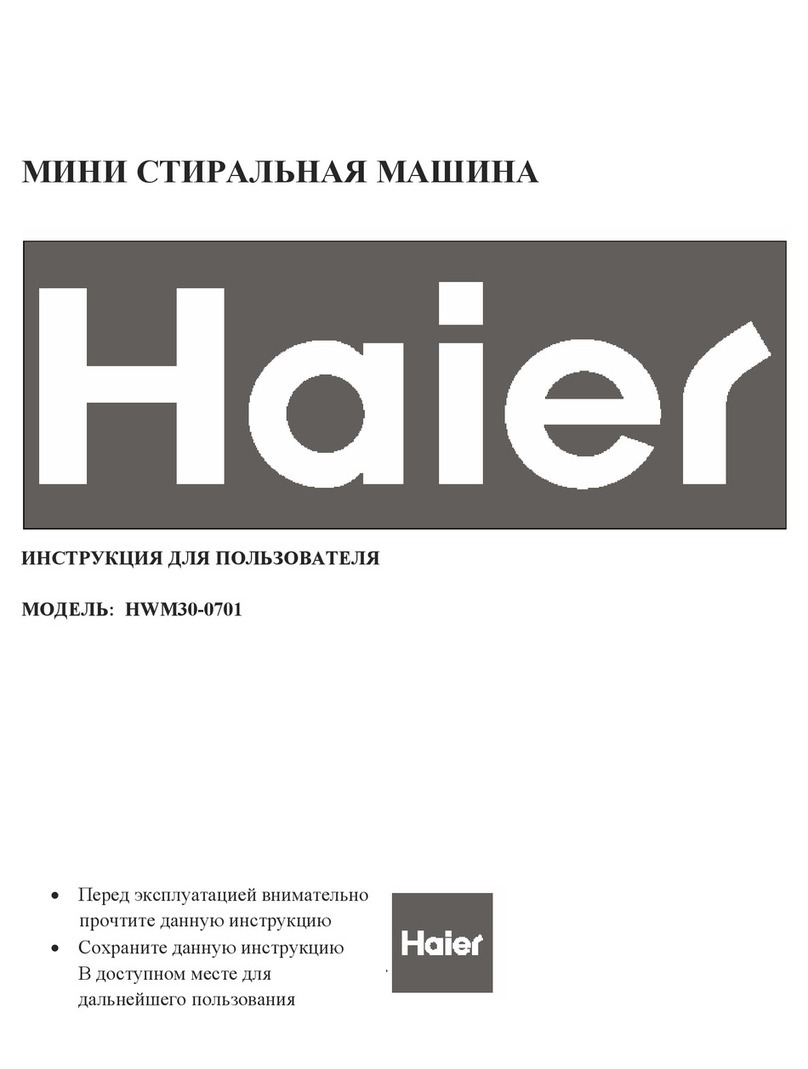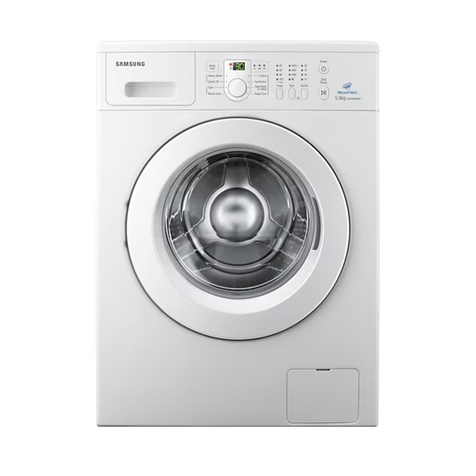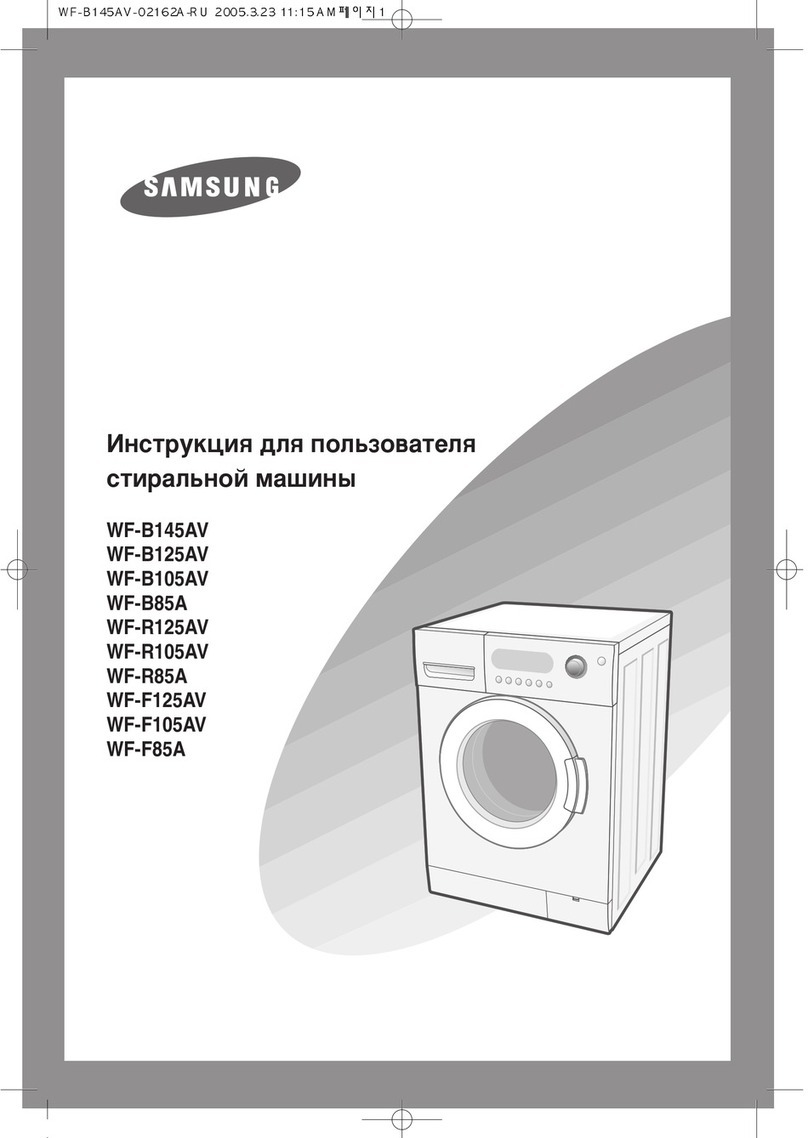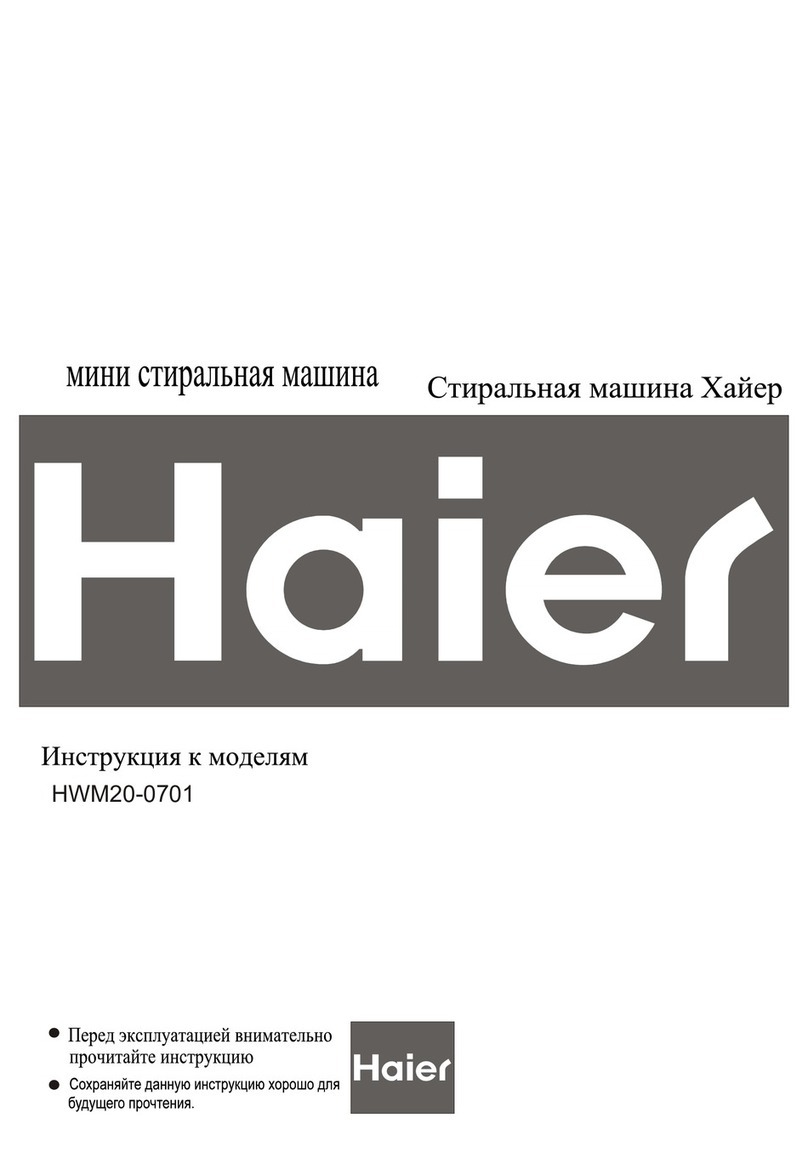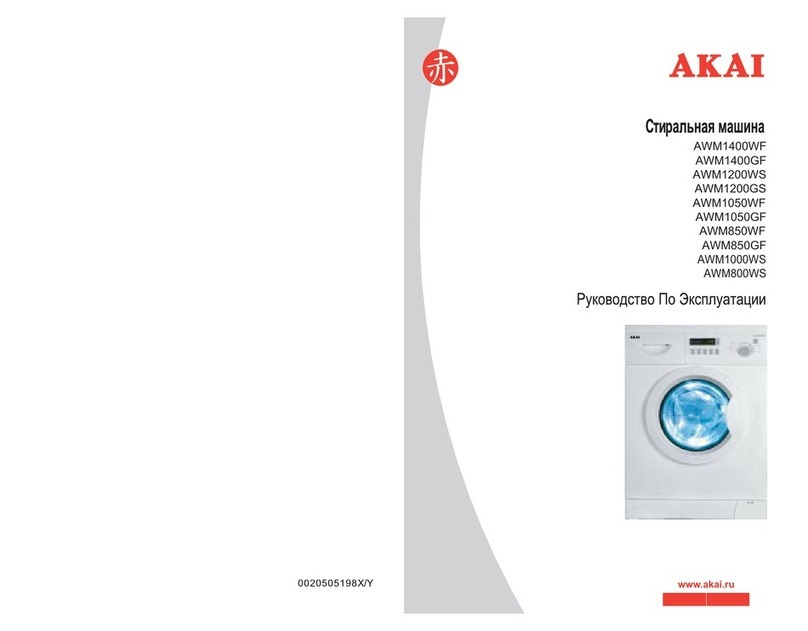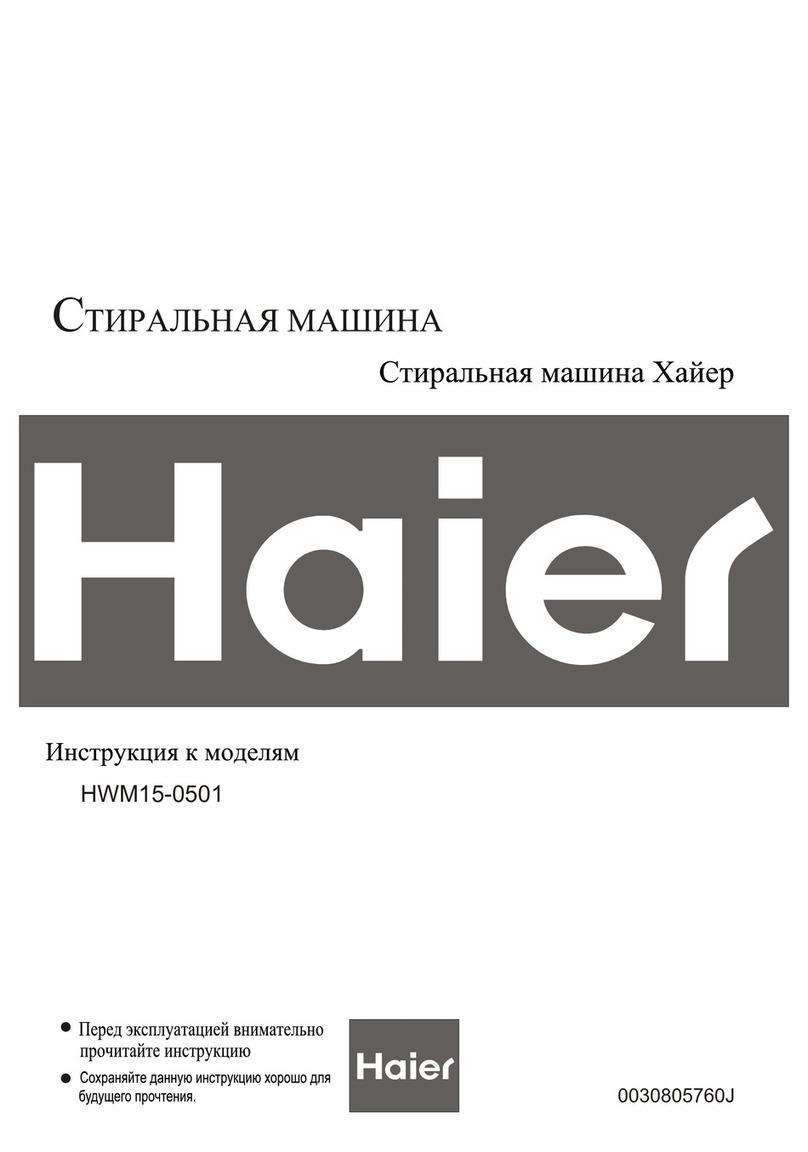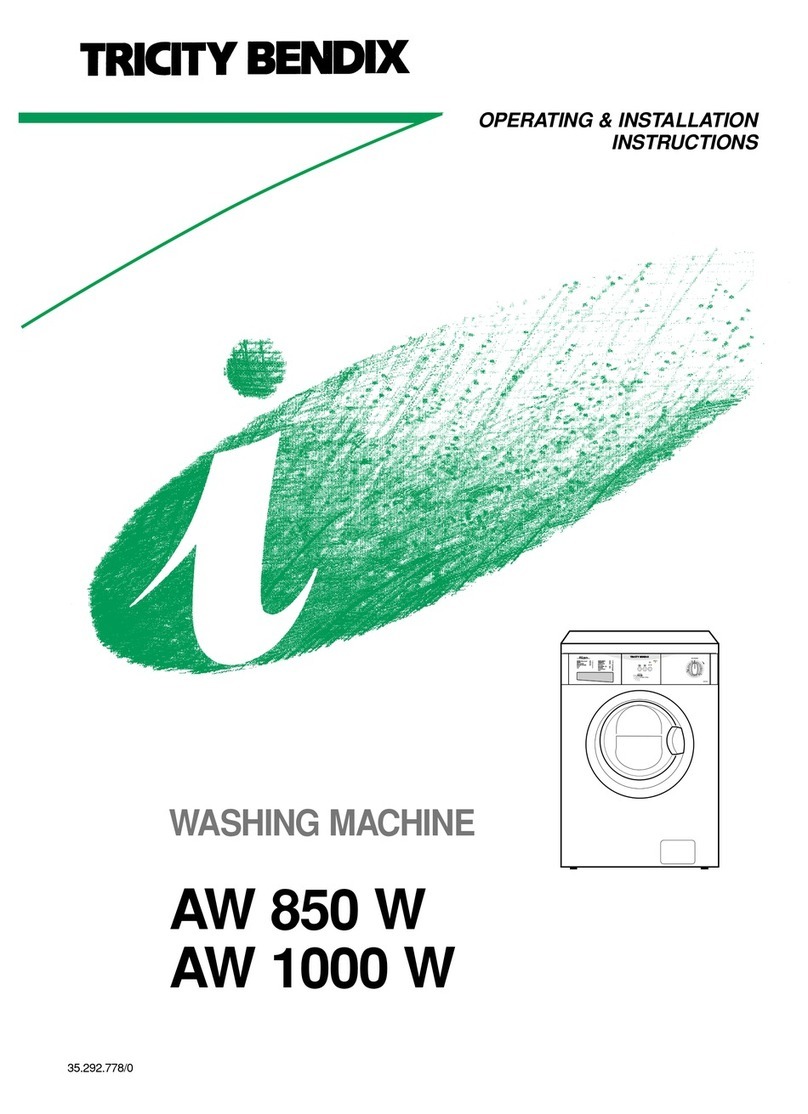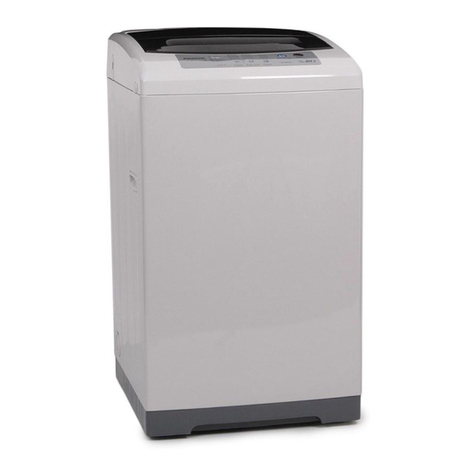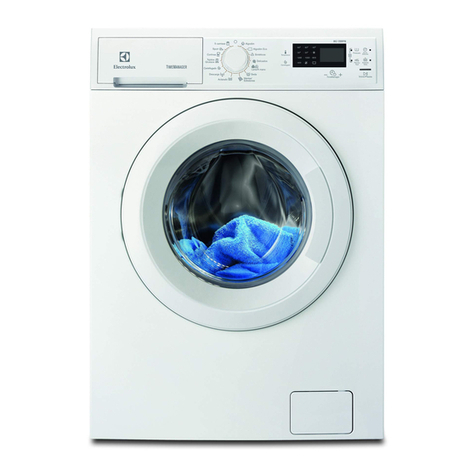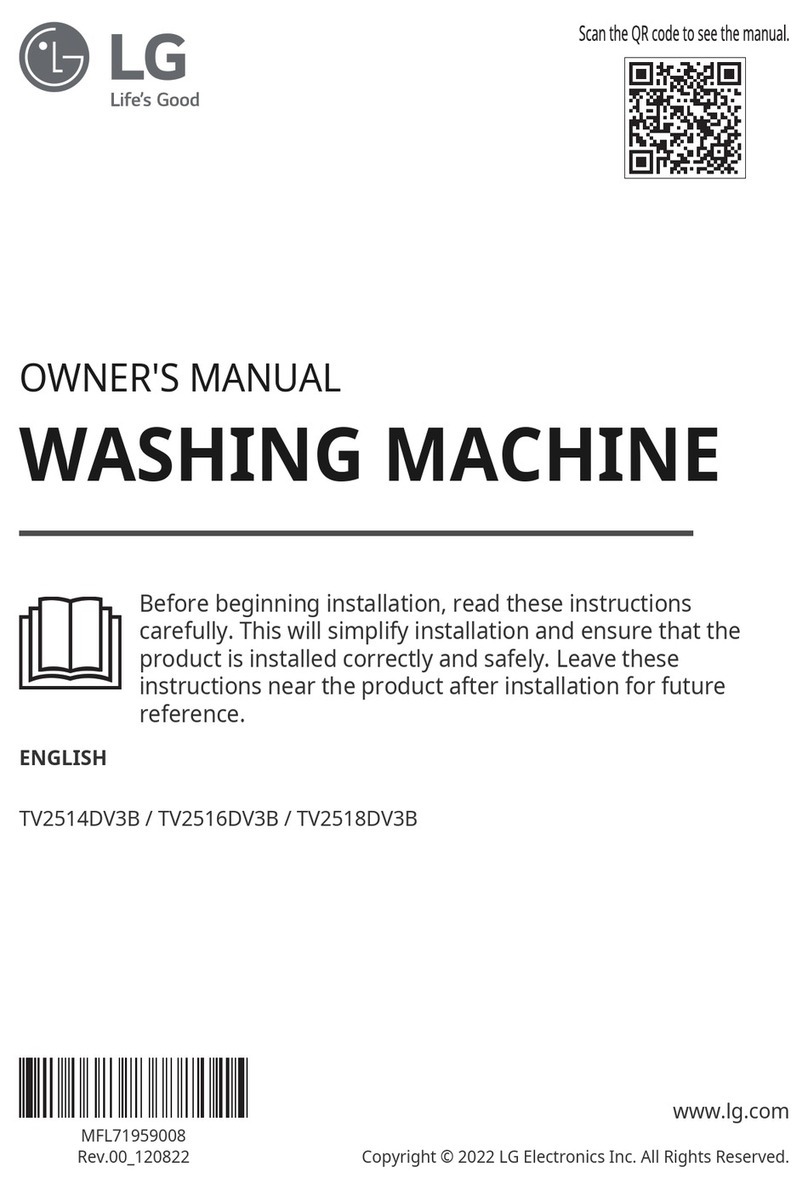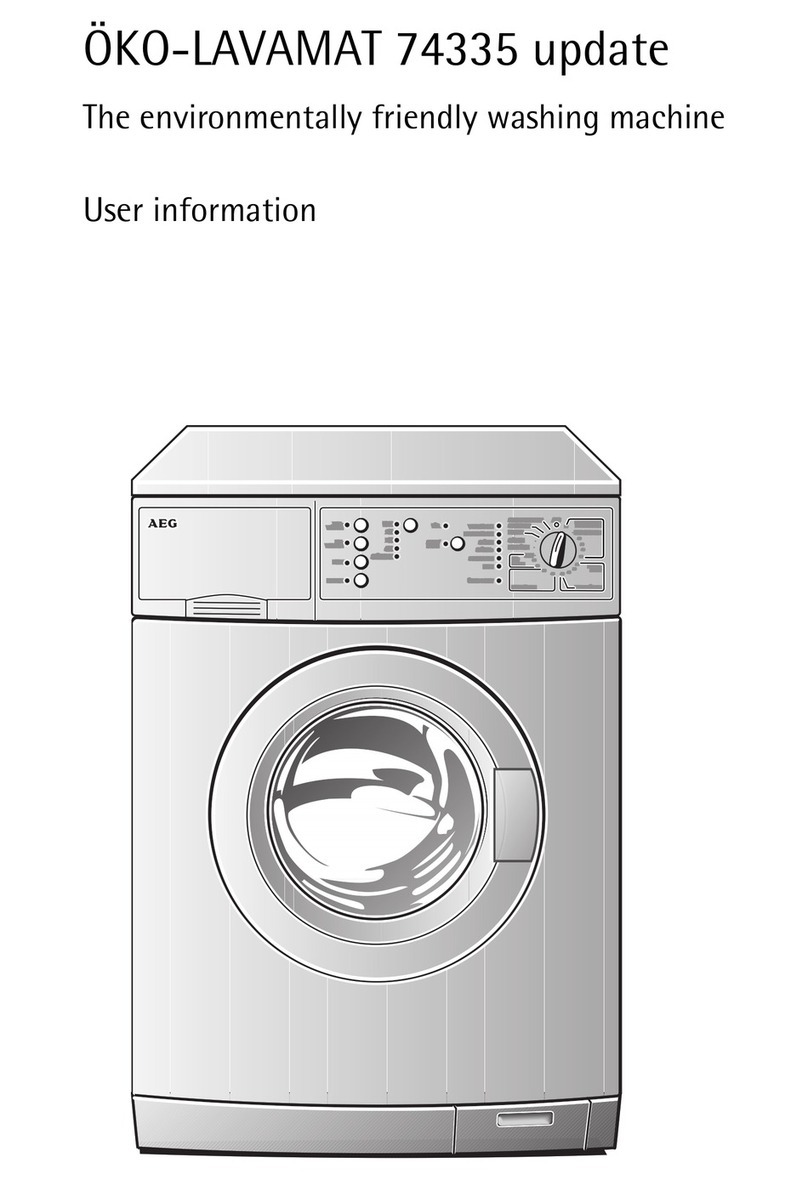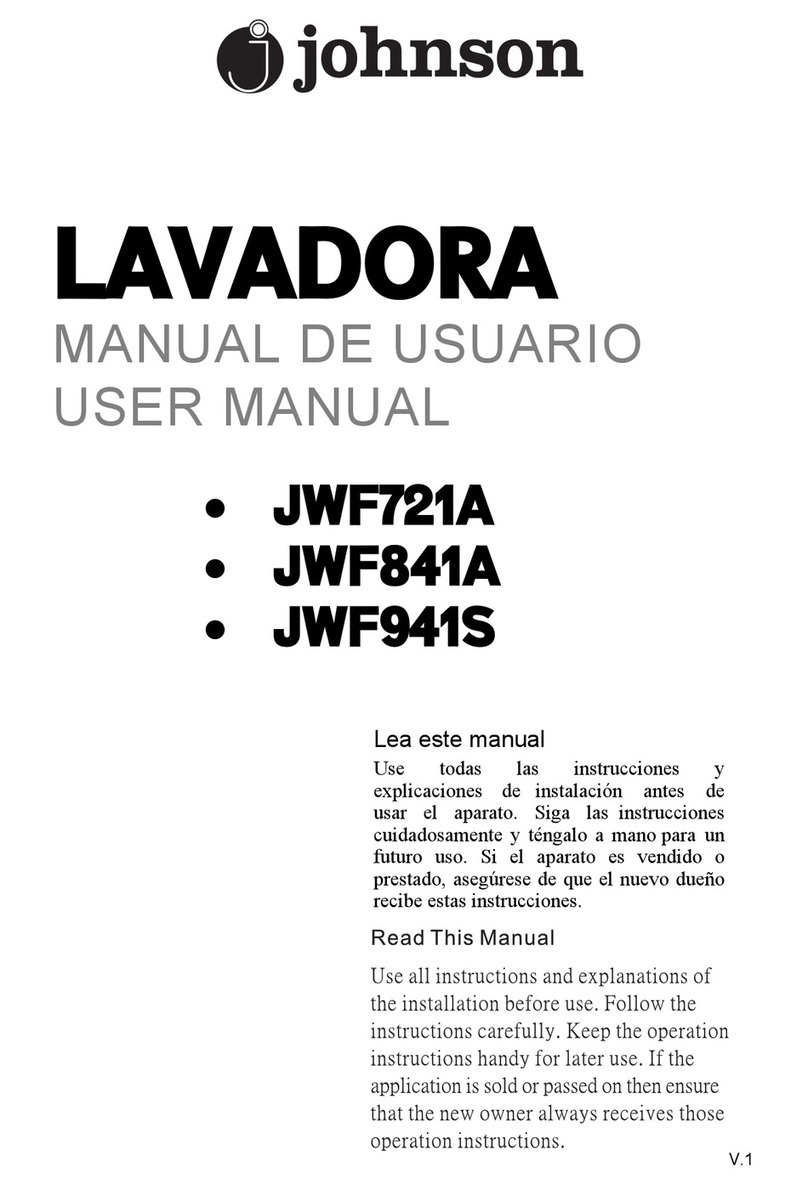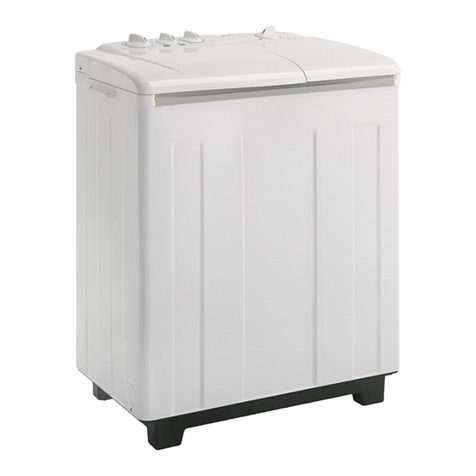The resultsof continued use of carbonate detergents
Is your water hard? If it is, and washer surfaces. The hardness (11or more grains) and if you wash
if you use acarbonate type non- of your water and your washing just afew loads aweek, you may
phosphate detergent, you will frequency will determine how see limestone buildups in just afew
most probably notice limestone* rapidly the limestone will build months.
deposits on your clothes and up. If your water is VERY HARD
Effects on clothes
Although limestone buildup occurs
more rapidly on cotton, it will
eventually affect various fabrics in
the following ways:
●Gives astiff, harsh, rough feel to
fabrics such as toweling.
●Causes colors to fade and become
dull and dingy.
●Causes graying of fabrics.
●Leaves awhite, powdery residue
on dark-colored items.
●Causes spot-fading ofbright
colors as aresult of direct contact
with detergent.
●Reduces wrinkle-resistance of
permanent press fabrics.
●Destroys effectiveness of flame-
retardant finishes on cottons such
as children’s sleepwear.
.Increases fabric wear because
of the scrubbing action between
limestone deposits on the fabrics
during washer agitation.
Effects on washer
●Unsightly buildup on all washer
surfaces exposed to the wash
solution.
●Mat-1ike,crusty formations caused
by lint adhering to the sticky
limestone deposits.
.Increas~ se~ice calls because
of limestone deposits in the pump,
recirculation water hoses, filters
and other washer parts.
●Reduced useful life of washer.
Recommended methods to
reduce limestone buildups
●Use apowdered phosphate
detergent or aliquid detergent if
these are available in your area.
.Install ahome water softener.
This will significantly reduce
limestone buildup.
●Use apackaged non-precipitating
water softener, such as Calgon
brand with phosphate.
Good washing practices
may delay limestone damage
to clothes
The following recommendations
will temporarily delay the effects
of limestone on your clothes.
These are generally good washing
practices and will give better soil
removal whether or not you have
hard water or use carbonate
detergent.
●Use hotter wash water, for
example up to 150°F.for cottons.
This also improves oily-soil
removal.
●If you wash in cooler water to
saveenergy, use more detergent to
promote better washing. Also be
sure to use bleach on bleachable
fabrics. Use hot water whenever
possible.
.Add detergent and allow washer
to fill and agitate for three or four
minutes to dissolve detergent
before adding clothes.
●Increase amount of detergent.
See guide on opposite page for
recommended detergent amounts
in relation to waterhardness.
●Increaseuse of bleaches,presoaks,
packagedwaterconditioners,prewash
soil and stain removers to help in
removing stubborn soils and stains.
●Use greater care in sorting loads.
Washvery dirty loads separately
and increase detergent to help keep
dirt from redepositing on less
soiled items. Washdelicate items
separately to prevent damage from
heavy, sturdy clothes.
.Wash smaller loads to increase
cleaning action of washer.
●Use fabric softener to counteract
stiffness or harshness in clothes.
How to partially restore clothes
Once clothes havedeveloped
deposits, they may be partially
restored by soaking in asolution
of two cups of vinegar in one gallon
of hot tap water for 15minutes.
USE APLASTIC CONTAINER.
Then wash clothes in the washer
using detergent.
CA~ONS:
●Do not use vinegar soak
solution in washer. The acidic
action of the vinegar may
damage the porcelain.
●Vinegar soak solution may
reduce the wrinkle-resistance
of permanent press fabrics.
●Vinegar soak may damage
the dyes in some fabrics.
*LIMESI’ONE-techn icallycalled CALCIUM CARBONATE—is caused by the
reactionof the calcium inthe hard water with the sodium carbonate in the detergent.
L
10
